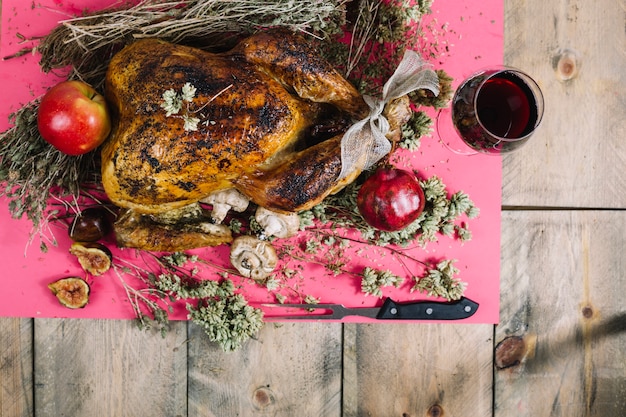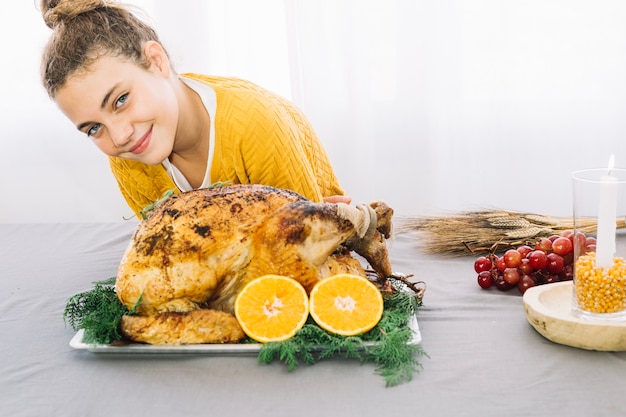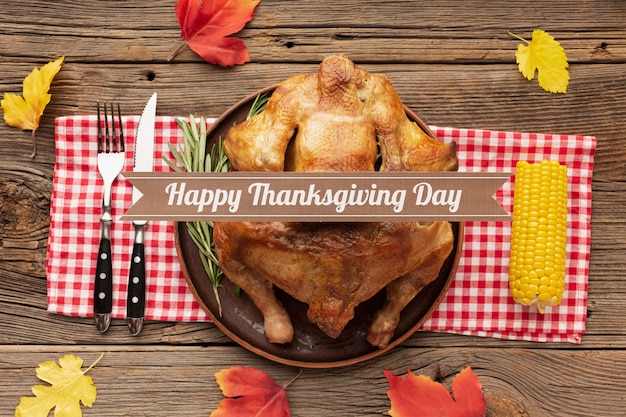(Part 1) The Great Turkey Debate: Fresh or Frozen?

Fresh Turkey: The Pros and Cons
- Pros: Fresh turkeys often have a richer, more intense flavour, and they’re generally less prone to dryness. Plus, you can grab one from the butcher shop and pop it straight into the oven – no defrosting dramas.
- Cons: Fresh turkeys can be a bit more expensive, and you’ve got to time your shopping trip precisely. The last thing you want is to arrive at the butcher's only to find they’ve sold out of the good stuff!
Frozen Turkey: The Pros and Cons
- Pros: Frozen turkeys are usually a bit more budget-friendly, and you’ve got the freedom to buy them weeks or even months ahead, especially during the holiday rush. It’s a real stress-saver, that’s for sure.
- Cons: Frozen turkeys can sometimes be a bit dry, and defrosting them properly is a crucial step. We’re talking about a slow and steady process, not a microwave miracle! A large turkey can take days to defrost completely, so make sure you’ve got plenty of time and space in the fridge. And don’t even think about defrosting it at room temperature – that’s a recipe for disaster.
(Part 2) Sizing Up Your Turkey: A Matter of Numbers

Here’s a handy table to help you plan your turkey order:
| Number of Guests | Turkey Size (lbs) |
|---|---|
| 4-6 | 6-8 lbs |
| 8-10 | 10-12 lbs |
| 12-14 | 14-16 lbs |
| 16 | 18 lbs |
Remember, a little bit of extra turkey never hurts. After all, delicious turkey sandwiches on Boxing Day are a holiday tradition in our house!
(Part 3) Stuffing: The Heart of the Turkey

But here’s a crucial bit of advice: the stuffing needs to be cooked properly. It’s not a time for culinary shortcuts. You can either stuff the turkey with it or cook it separately in a baking dish. I prefer the separate approach. It gives me more control over the cooking process and ensures the stuffing is cooked through and through.
Stuffing Tips: A Bit of Advice
- Don’t overstuff: Think of it like a well-dressed guest – don’t cram the turkey full of stuffing. A three-quarters-full cavity is ideal. Overstuffing can hinder the turkey’s even cooking.
- Cook separately for safety: This is where I firmly stand my ground. Cooking the stuffing separately in a baking dish is the safest way to ensure it's fully cooked.
- Get creative with flavours: The world is your oyster when it comes to stuffing. Add dried fruits, nuts, herbs, and spices to your heart’s content.
- Use fresh ingredients: Fresh herbs and spices are the key to a truly delicious stuffing. They add an incredible depth of flavour that you won’t find in dried equivalents.
(Part 4) Turkey Prep: The Art of Brining and Roasting
Alright, we’re getting down to the nitty-gritty now. Before the turkey goes into the oven, we need to give it a little pampering to ensure it comes out juicy and tender. One of my favourite tricks is brining. It involves immersing the turkey in a salt water solution for several hours, which helps to retain moisture and adds a subtle but noticeable flavour. It’s a bit of a time commitment, but trust me, it’s well worth the effort.Brining: The Secret to a Juicy Turkey
- Why brine? Brining is like giving your turkey a luxurious spa treatment. It adds moisture and flavour, creating a truly tender and juicy bird.
- How to brine: Dissolve salt and sugar in water, and then gently submerge the turkey in the brine for several hours. You can also add herbs and spices to the brine for extra flavour. I like to add a sprig of rosemary and a few bay leaves for a classic touch.
- Brining times: The brining time depends on the size of the turkey. A smaller turkey might only need 4-6 hours, while a larger turkey could benefit from 12-24 hours. Remember, it's better to over-brine than under-brine.
Roasting: Bringing It All Together
Now, it's time for the big moment – roasting! Preheat your oven to 325°F (160°C), and place the turkey in a roasting pan. A good tip is to add a little bit of water to the bottom of the pan. This creates steam, which helps to keep the turkey moist throughout the cooking process. Cover the turkey loosely with foil for the first hour or so. This helps to prevent it from drying out too quickly. Then, remove the foil and continue roasting until the internal temperature reaches 165°F (74°C) in the thickest part of the thigh. You can check the temperature using a meat thermometer.roasting tips: Making It Easy
- Pat dry the turkey: Before roasting, pat the turkey dry with paper towels. This helps to create a crispy skin, which adds a lovely textural element to the meal.
- Use a roasting rack: Place the turkey on a roasting rack inside the roasting pan. This allows air to circulate around the turkey, which promotes even cooking.
- Rest the turkey: After roasting, let the turkey rest for about 15-20 minutes before carving. This allows the juices to redistribute, ensuring a moist and tender turkey.
(Part 5) The Art of Carving: A Thanksgiving Tradition
The moment of truth has arrived! The turkey is cooked, it’s resting, and it’s time to carve. Now, I know some people get a bit nervous about carving a turkey, but it’s really not that difficult. Just use a sharp carving knife, take your time, and follow these steps:Carving a Turkey: A Step-by-Step Guide
- Remove the legs and thighs: Start by cutting the skin between the legs and the breast. Then, carefully slide the carving knife between the leg and the thigh bone, and cut through the joint. Repeat on the other side.
- Separate the legs and thighs: Once the legs and thighs are removed, you can separate them by cutting through the joint where the leg and thigh meet.
- Carve the breast: Carefully cut the breast into slices, following the direction of the grain. Try to avoid cutting through the skin.
- Remove the wings: Cut the wings at the joint where they meet the breast.
(Part 6) Gravy: The Finishing Touch
No roast turkey is complete without a delicious gravy! The gravy adds moisture and flavour, and it’s the perfect way to mop up all those delicious pan juices. There are many different ways to make gravy, but I prefer to use the pan drippings from the turkey. Simply deglaze the roasting pan with a little bit of wine or stock, then whisk in some flour to thicken the sauce. Bring it to a simmer and season to taste.Gravy Tips: Getting It Right
- Deglaze the pan: Add a little bit of wine or stock to the roasting pan and scrape up the brown bits at the bottom. This will add a rich flavour to your gravy.
- Use a whisk: A whisk is the best tool for making gravy. It helps to incorporate the flour and create a smooth sauce.
- Simmer the gravy: Simmer the gravy for a few minutes to thicken it and allow the flavours to develop.
- Strain the gravy: Before serving, strain the gravy through a fine-mesh sieve to remove any lumps or bits of turkey.
(Part 7) The side dishes: Completing the Feast
Of course, no thanksgiving dinner is complete without a selection of delicious side dishes. We’re talking mashed potatoes, cranberry sauce, stuffing, green bean casserole, and all those classic favourites. These side dishes are the supporting cast that complements the star of the show, the turkey.Side Dish Ideas: Complementary Flavours
- Mashed potatoes: These are a Thanksgiving staple. You can add butter, milk, cream, herbs, and spices to create a creamy and delicious side dish. I like to add a pinch of nutmeg for a touch of warmth.
- Cranberry sauce: This tart and sweet sauce is a perfect contrast to the savoury turkey. You can make it from scratch or buy it pre-made.
- Stuffing: As mentioned earlier, there are endless possibilities for stuffing. Get creative and try different flavours.
- Green bean casserole: This classic dish is a bit of a Thanksgiving tradition. You can make it from scratch or use canned green beans.
- Roasted vegetables: Roasted vegetables add a touch of sweetness and depth of flavour to your thanksgiving meal. Try roasting carrots, Brussels sprouts, or butternut squash.
- sweet potato casserole: This creamy and sweet dish is a Thanksgiving favourite. You can top it with marshmallows for a touch of sweetness.
(Part 8) FAQs: Your Turkey-Related Questions Answered
Now, I know you’ve probably got a few questions about turkey cooking, so let’s tackle some of the most common ones:1. How Long Do I Cook a Turkey?
The cooking time for a turkey depends on its size and weight. As a general rule of thumb, allow about 15 minutes per pound of turkey at 325°F (160°C). However, it’s always best to use a meat thermometer to check the internal temperature of the turkey. The turkey is cooked when the internal temperature reaches 165°F (74°C) in the thickest part of the thigh.
2. How Do I Know If My Turkey Is Cooked?
The best way to check if your turkey is cooked is to use a meat thermometer. Insert the thermometer into the thickest part of the thigh, making sure it doesn’t touch bone. The turkey is cooked when the temperature reaches 165°F (74°C). You can also check the juices: if they run clear, the turkey is cooked. If they’re pink, it needs to cook longer.
3. What Should I Do With Leftover Turkey?
Leftover turkey is a gift! You can use it to make sandwiches, salads, soups, and casseroles. It also freezes well, so you can enjoy it later.
4. Can I Stuff My Turkey the Day Before?
It’s not recommended to stuff your turkey the day before, as it can lead to food poisoning. It’s best to stuff the turkey just before roasting. If you want to save time, you can cook the stuffing separately in a baking dish.
5. How Do I Keep My Turkey Moist?
There are a few tricks to keep your turkey moist. First, brine the turkey before roasting. Second, cover the turkey loosely with foil for the first hour or so of roasting. Third, add a little bit of water to the bottom of the roasting pan to help create steam. And finally, let the turkey rest for about 15-20 minutes before carving.
(Part 9) Beyond the Bird: A Feast for the Senses
We’ve covered the turkey, the stuffing, the gravy, and the side dishes. Now let’s talk about the bigger picture. This isn’t just about cooking a delicious meal, it’s about creating a memorable experience for your guests. Set the scene with some festive decorations, play some music, and most importantly, enjoy the company of your loved ones. Remember, the best feasts are those that are shared with laughter, good conversation, and a touch of magic.So, there you have it, my fellow food enthusiasts. A comprehensive guide to cooking a turkey that’s sure to impress your guests. Go forth and conquer the kitchen, and remember, the most important ingredient is a dash of good cheer and a whole lot of love. Happy Holidays!
Everyone is watching

How to Cook Frozen Lobster Tails Perfectly: A Step-by-Step Guide
RecipesLobster. Just the word conjures up images of lavish meals, special occasions, and a taste of luxury. But let's...

Pigs in a Blanket Cooking Time: How Long to Bake for Perfect Results
RecipesAh, pigs in a blanket. Just the name conjures up images of those delightful little parcels of crispy pastry en...

Pork Fillet Cooking Time: How Long to Cook It Perfectly
RecipesPork fillet, or tenderloin as it's sometimes called, is a real favourite in our house. It's so versatile, and...

The Ultimate Guide to Tender, Juicy Pulled Pork
RecipesRight, let's talk pulled pork. It's one of those dishes that just screams "comfort food," doesn't it? I mean...

The Ultimate Guide to Cooking Sweet Potatoes: From Roasting to Mashing
RecipesSweet potatoes. Just the name conjures up images of warm, comforting dishes, bursts of vibrant color, and a to...
